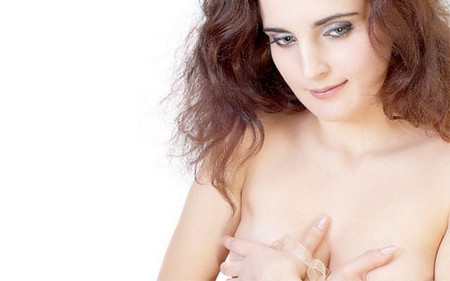Best Way to Take Care of Your Breast after Giving Birth
About three to five days after you’ve had the baby, your breast milk will “come in.” This means the colostrum is now replaced with breast milk. If you are nursing, you may feel liquid moving quickly through your breast or you may notice that the breast your baby is not nursing from is leaking fluid. This is called the “let-down reflex.” The let-down reflex often occurs when your baby cries to be fed.
During this same time, you’ll feel as if you have two hard heavy balls on your chest. Your breasts are engorged or swollen with breast milk, whether you plan to breast-feed or not. This is a normal function of the breast, but it can be uncomfortable, especially if you do not plan to breast-feed. The solution to this problem is basically the same regardless of what your feeding plans are. To decrease the discomfort from engorgement you can:
- Check your temperature and your breast for signs of an infection. Call yourOBprovider if your temperature is over iooQ F by mouth, if your breasts become extremely hard, or if the skin is pinkish-red and hot to the touch like a sunburn. You may have an infection of the breast called mastitis that can be treated with antibiotics. Wear a bra that fits snugly. The pressure will work against the discomfort. If you are breast-feeding wear a comfortable and supportive nursing bra.
- Take warm showers. These will soften the breast tissue and expel some milk. If you are breast-feeding, try to expel some milk before you try feeding the baby. When your breasts are very hard, your baby has a harder time latching onto a nipple to nurse. Getting the flow started will help soften the breast and allow the baby to nurse. If you are bottle-feeding don’t pump your breasts. Pumping stimulates increased production of milk.
- Put ice packs on your breasts. The cold reduces blood supply to your breasts. Reduced blood supply decreases milk production and alleviates the pain and swelling. If you are breast-feeding do this after nursing.
- Check with yourOBprovider about taking analgesics like Tylenol or Advil.
- If you’re planning to breast-feed, use a pad of cotton inside the bra cup to catch leaking milk. This will keep you from having to change your clothes as often. Try to get plenty of fluids, rest, and eat healthy food and find out what resources are available to get continuing professional support. The critical time to get help is when you first get home; the support and advice of a lactation expert can improve your chances of continuing to breast-feed.
Categories
Advertisements
Recent Articles
 How to Understand Bed Sizes – A Small Guide
How to Understand Bed Sizes – A Small Guide How to Select Some Must Have Kitchen Accessories
How to Select Some Must Have Kitchen Accessories Best Way to Change a Car Tire
Best Way to Change a Car Tire Best Way to Write an Affirmation
Best Way to Write an Affirmation Best Way to Take Charge of Your Financial Life
Best Way to Take Charge of Your Financial Life Best Way to Survive a Party When You Don’t Know Anyone
Best Way to Survive a Party When You Don’t Know Anyone Best Way to Stop Self Sabotaging Yourself
Best Way to Stop Self Sabotaging Yourself Best Way to Start Journal Writing
Best Way to Start Journal Writing Best Way to Speak with a Powerful Voice
Best Way to Speak with a Powerful Voice Best Way to Simplify Your Life
Best Way to Simplify Your Life Best Way to Respond to a Put-Down
Best Way to Respond to a Put-Down Best Way to Reduce Acne Breakouts
Best Way to Reduce Acne Breakouts Best Way to Recover from Dining Disasters
Best Way to Recover from Dining Disasters Best Way to Quit Your Job Gracefully
Best Way to Quit Your Job Gracefully Best Way to Make Your Own Website
Best Way to Make Your Own Website


Leave a Reply